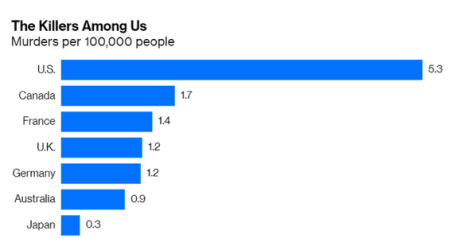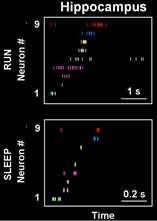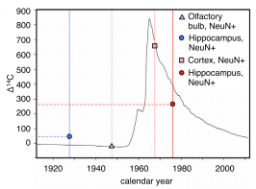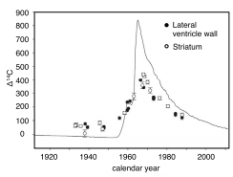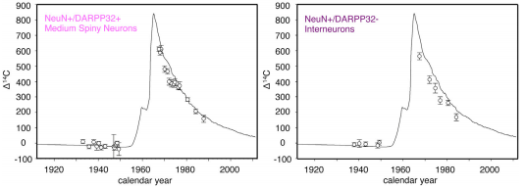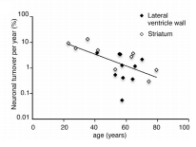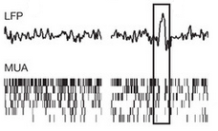Long time, no post. I’ve been a little hesitant on this one since it might read as something like an advice column. My main goal is to dispel a number of nutritional status quos/myths that a lot of people adhere to despite little hard evidence. Unfortunately, as I’ve discussed in a previous post, studying human nutrition is REALLY HARD.
That said, I find nutrition interesting and want to do what I can to figure out what (and when!) we should eat. But to be clear, you shouldn’t take my word as gospel, so if something piques your curiosity please check out the reference I provide (and after doing so feel free to comment if you think I’m in error).
MYTH 1: You should eat lots of small meals throughout the day
MYTH 2: Breakfast is the most important meal of the day
MYTH 3: Eating fats is bad for you
MYTH 3.5: Eating cholesterol is bad for you
MYTH 4: Sugar is better for you than corn syrup
MYTH 5: Salt consumption raises your blood pressure
MYTH 6: Organic foods don’t have pesticides
MYTH 7: “Natural” is better than artificial
MYTH 8: MSG gives you headaches
MYTH 9: Diet sodas help you diet

MYTH 1: You should eat lots of small meals throughout the day: I’m not really clear where this one came from. In terms of really basic biochemistry, it makes sense to have a constant stream of input calories that are then instantly utilized for output energy to avoid free radical electrons from hanging around. But the fact is our bodies didn’t evolve with bowls of nuts and fruit laying about the savannah. So having your digestion system constantly working throughout the day doesn’t seem like something your body was meant to do.
On the contrary, studies in animals (from yeast to mammals) show strong evidence that consistently experiencing starvation conditions makes them age better (as in, they stay healthy for longer). I realize this is counterintuitive, but it helps to think of things in an evolutionary sense. Our ancient ancestor, let’s go as far back as one much like a rodent, only lived for a couple of years before dying of old age/cancer. And if he/she happened to be born in the middle of a drought, which could last for months upon years, that’d be devastating for a species with such a small window before death. It appears evolution’s solution to this was to express certain survival genes—known as sirtuins—which slow down your metabolism and therefore your entire aging process so you can wait to worry about procreating in more bountiful times.
So why’d I tell you all of that? Because we’ve shown these sirtuin genes seem to have stuck around with higher species, as they have much the same effect in dogs and monkeys as they do in rodents. And the good news is “starvation” might not be as difficult to achieve as you think. As outlined in this NY Times piece and detailed in PNAS in 2014, even relatively small windows of starvation can cause sirtuin expression and possibly give you long-term longevity benefits. In short, there are 3 ways to achieve such starvation conditions, in what I’d consider increasing order of ease:
[Hard]: Calorie restriction: eat something like 30% less calories than a typical person over the course of your life. This is what has shown longevity benefits from extensive testing in rodents in addition to limited evidence in monkeys. Some people actually do this.
[Moderately Hard?]: Intermittent fasting: go through long periods of minimal calories each week. For example, Jimmy Kimmel said he maintains his weight by doing a 5 and 2 diet, where he eats what he wants on weekdays but only 500 calories a day on weekends. Hugh Jackman and Benedict Cumberbatch are also apparently fans. But no women. Just kidding, there must be some. Right?
[Not Bad]: Time-restricted feeding: go through a moderate period of fasting every day. Recent research in rodents has shown this can be as short as 15 hours a day (which sounds like a lot, but it’s basically just skipping breakfast or dinner).
I’ve actually been loosely doing this one for almost a year now, and I can confirm it’s “Not Bad”. I happen to never be hungry for breakfast anyway and just eat a late lunch around 2-3pm. I like to think each time I get hungry around 11am (which goes away fairly quickly as your body goes into ketosis and starts burning fat stores—your brain can’t go without glucose for long!) I’m adding another healthy day to the end of my life. To be clear though: a lot of research still needs to be done to understand the long-term effects in humans.
MYTH 2: Breakfast is the most important meal of the day: Considering I just told you that I don’t eat breakfast, this might seem like a conflict of interest. I’ll let Aaron Carroll (whose NY Times pieces are definitely worth keeping up with if you’re interested in sound, reasonable nutritional advice) take this one: Sorry, There’s Nothing Magical about Breakfast. The bottom line: “… evidence for the importance of breakfast is something of a mess. If you’re hungry, eat it. But don’t feel bad if you’d rather skip it, and don’t listen to those who lecture you.”
MYTH 3: Eating fats is bad for you: This probably won’t come as a big surprise to anyone voluntarily reading a health-related blog post on the internet, but it turns out fat doesn’t make you fat (as I’ve put it in the past, this might be the most costly homonym in language). If you don’t believe me, one of the best long reads of 2016 explains how egotistical scientists starting all the way back in the 1960s mistakenly maligned fat instead of sugar for decades. Fat is a calorie-dense substance that has feedback mechanisms that tell you you’re full. As a result, it’s more difficult to overeat with a high-fat meal. Saturated fat, which is particularly blamed, is not your enemy! Of course, there are bad fats (in fact, I plan a future post pontificating as to why fast food is bad for you. My hypothesis: an abundance of vegetable oils). We’ve all heard of trans fats and hydrogenated oils seem dangerous as well.
But the fact is there are fats in every cell of your body. So some of them are certainly good! And it appears the ratio of fats that comprise your membranes likely have long-term health consequences. This is where essential fatty acids come in, and more specifically, why people often talk about the Omega 3:6 ratio. Getting too much of one of these building blocks without getting enough of the other could be harmful. Fortunately, contrary to what many sources will tell you, your body can make its own omega 3 (essential) fatty acids. However, the enzymes responsible for this don’t appear to be particularly well expressed, and since they’re essential in your brain, retina, etc. it’s important to seek out a dietary source like fish, flax, chia seeds, etc.
For more reading, this blog has definitive guide to fats with some well-referenced information. And there are certainly mainstream sources too.
Some take-home points of my consolidated impressions:
-animal fats like lard or butter are pretty neutral nutritionally. They’re full of calorie-dense saturated fat, which makes you feel full. However, they’re relatively low in vitamins/antioxidants (except for vitamins A and D) so I largely think of them as filler. Tasty, tasty filler.
-fats from NATURALLY OILY FOODS like nuts/plants are winners! Olive oil, coconut oil, avocado oil, macadamia nut oil, etc. are high in healthy fats and, unlike animal fats, tend to be enriched in vitamins/antioxidants to boot.
-fats from plants that require major extraction methods aren’t so good for you. Hydrogenation was invented to squeeze the oil out of cotton seeds so Procter and Gamble could make money on something they were throwing away. The hydrogenation process makes many seed oils like this edible, but they’re almost certainly not good for you in large quantities. It’s not like you thought those french fries cooked in rapeseed oil were good for you, did you? Also of note is that hydrogenated oils are often called “vegetable oils” for marketing purposes, as vegetable is a misnomer.
-fats from fish are good for you! Sure, you can certainly overeat fish (particularly if it’s high in mercury), but getting a source of omega-3s a few times a week seems important for long term health. The American diet almost certainly has too many omega-6s (highly enriched in vegetable oils) and too few omega-3s.
MYTH 3.5: Eating cholesterol is bad for you: Another one you probably have heard about already, but just in case I’ll slide it in here as it’s similar to Myth 3. The relatively conservative Dietary Guidelines for America found “available evidence shows no appreciable relationship between consumption of dietary cholesterol and serum (blood) cholesterol, consistent with the AHA/ACC (American Heart Association / American College of Cardiology) report. Cholesterol is not a nutrient of concern for overconsumption.” 85% of the cholesterol in your blood is made in your liver, so issues with cholesterol overwhelmingly have to do with your genetics.
MYTH 4: Sugar is better for you than corn syrup: I wrote a whole post on why sugar is corn syrup is sugar. All sugar is bad for you. There are articles and talks galore if you don’t believe it. It also recently came to light that the “fat is bad, carbs are good” craze was perpetuated by Harvard scientists paid off by the sugar industry in 1967. If you’re going to ruin millions of lives at least do it for more than $50k! One of the main problems with sugar is the feedback mechanisms that are meant to tell your body you’ve had enough calories are stymied. To put it another way: sugar is nothing less than an addictive substance. Fortunately, our bodies are awesome at getting us to breeding age without many deleterious effects (#1 pick and former NBA MVP Derrick Rose apparently survived largely on gummy bears and sour straws through college. Of course then he blew out his knee. Coincidence?). However, if you’re looking to live a healthy life past 25, I’d suggest trying to limit your intake.
MYTH 5: Salt consumption raises your blood pressure: Now for some good news: there’s no convincing evidence that a lot of salt consumption is bad for you! The link between salt intake and blood pressure looks like a myth perpetuated by decades-old science. The jury is still out on this one, and I’m sure we’ll be seeing back and forth pieces for decades (including a recent NEJM article which says too little OR too much salt is bad for you—which is good advice for most nutrients!). It seems obesity is a way more important factor for unhealthy blood pressure, as you might expect.
MYTH 6: Organic foods don’t have pesticides: they often do, but were just grown with pesticides that made it on the USDA’s organic-approved pesticide list. Some of these “organic” pesticides are almost certainly bad for you if you get enough of them (mineral oil, borax, copper fungicides definitely don’t sound healthy) and there’s no way to really know how much were used. Which isn’t to say that you should totally abandon organic food, since they do tend to have less pesticide residue, but be aware that some foods are just harder to grow than others without using pesticides (organic or not). Something with a rind like an orange/avocado/mango/banana not only is harder for pests to get through but also keeps the actual pesticide from touching the part you’re going to eat. Meanwhile, produce with thin skin like berries or apples (which have their own problems since grafting reduces their ability to evolve their own natural pesticides) tend to require more pesticides and even worse they get absorbed more easily into the part you’re going to eat. I’m not saying you should stop eating fruits and veggies! But be aware of the most and least pesticided fruits (EWG keeps a convenient list for you) and try not to eat too many of the bad ones.
MYTH 7: “Natural” is better than artificial: Fairly self-explanatory, but it’s another pet peeve of mine just like “organic” pesticides. Just because something is natural doesn’t mean it’s good for you. Arsenic is natural. Piranhas are natural. And just because something is synthetic doesn’t mean it’s bad for you. We can synthesize the sleep aid melatonin, and it’s the same exact chemical as what we extract from animals’ pineal glands. “Natural” is a mostly meaningless marketing word. Much the same way “chemicals” and “GMOs” are. There are good and bad kinds of each, since they describe a huge range of different products.
MYTH 8: MSG gives you headaches: This old wives’ tale was largely propagated by an NEJM article from 1968 written by one cranky old doctor diagnosing his own symptoms (N=1!). 538 did a deep dive on this, but for the vast majority of people MSG, which is just sodium paired with glutamate (an essential amino acid we all have in abundance), has no effect in the doses used to give foods that tasty umami kick. Spread it on!
MYTH 9: Diet sodas help you diet: This isn’t to say that sugar water is good for you either (I clearly indicated in Myth 4 that it’s not), but it turns out that despite avoiding calories, artificial sweeteners have their own deleterious effects that lead to obesity. I went over more details in a previous post about how your brain isn’t tricked so easily, but the key is regular consumers of diet drinks are actually fatter than non-drinkers. New work seems to indicate part of the problem is sugar substitutes change your gut bacteria in a way that might lead to obesity.
